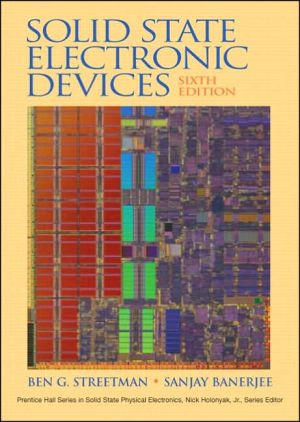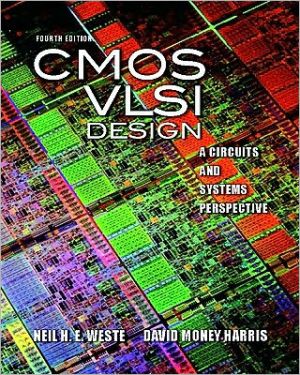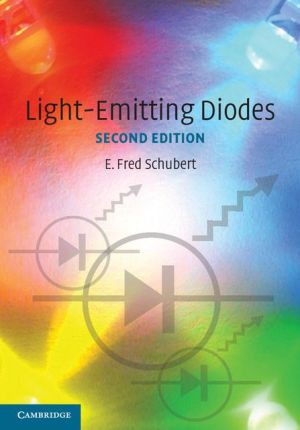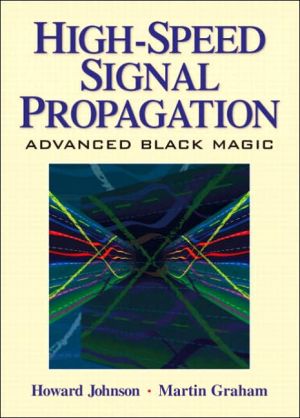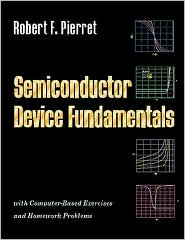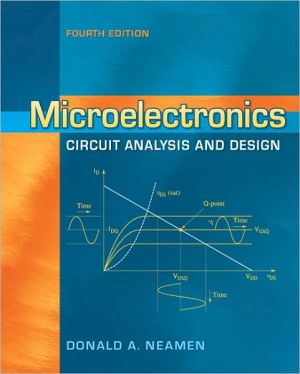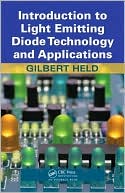Solid State Electronic Devices
Solid State Electronic Devices is an introductory book on semiconductor materials, physics, devices, and technology. Now in its sixth edition, the book retains the two basic goals that have helped to make it so successful: 1) develop the basic semiconductor physics concepts to understand current and future devices and 2) provide a sound understanding of semiconductor devices and technology so that that their applications to electronic and optoelectronic circuits and systems can be appreciated.
Search in google:
\\* 15876-6, Streetman, Solid State ElectronicDevices, 4/E *\\Engineers and scientists whodeal with electronics must continually be involvedin professional up-dating and self-education inorder to keep abreast of new devices andprocesses. This modern introduction to existingsolid state electronic devices surveys thestate-of-the-art in theory, applications, and thelatest devices. It discusses both silicon andsemiconductors -- to reflect their continuinggrowth in importance for emerging optoelectronicand high-speed device applications.First reviews the nature ofsemiconductors and conduction processes in solids;then describes the p-n junction and some of itsapplications and the principles of transistoroperation and their application to integratedcircuits; and concludes by exploring theapplications of the theory of junctions andconduction processes to lasers, switching devices,and microwave devices. Includes substantivepractice problems and reading lists ofprofessional literature for both introductory andquantitative treatments of selected topics.For practicing engineers andscientists who want to update their knowledge ofmodern electronics for a fuller understanding ofthe current literature on new devices andapplications. Booknews New edition of a widely used introductory textbook which provides readers with an understanding of existing devices and develops the tools for understanding future devices and applications. Coverage includes the basics of semiconductor materials and conduction processes in solids required to understand p-n junctions, transistors, and other devices, and definition of terms and concepts as they relate to a broad range of devices. Annotation c. Book News, Inc., Portland, OR (booknews.com)
PREFACE: \ Preface\ This book is an introduction to semiconductor devices for undergraduate electrical engineers, other interested students, and practicing engineers and scientists whose understanding of modern electronics needs updating. The book is organized to bring students with a background in sophomore physics to a level of understanding which will allow them to read much of the current literature on new devices and applications.\ Goals\ An undergraduate course in electronic devices has two basic purposes: (1) to provide students with a sound understanding of existing devices, so that their studies of electronic circuits and systems will be meaningful; and (2) to develop the basic tools with which they can later learn about newly developed devices and applications. Perhaps the second of these objectives is the more important in the long run; it is clear that engineers and scientists who deal with electronics will continually be called upon to learn about new devices and processes in the future. For this reason, we have tried to incorporate the basics of semiconductor materials and conduction processes in solids, which arise repeatedly in the literature when new devices are explained. Some of these concepts are often omitted in introductory courses, with the view that they are unnecessary for understanding the fundamentals of junctions and transistors. We believe this view neglects the important goal of equipping students for the task of understanding a new device by reading the current literature. Therefore, in this text most of the commonly used semiconductor terms and concepts are introduced and related to a broad range of devices.\ Reading Lists\ As a further aid in developing techniques for independent study, the reading list at the end of each chapter includes a few articles which students can read comfortably as they study this book. Some of these articles have been selected from periodicals such as Scientific American and Physics Today, which specialize in introductory presentations. Other articles chosen from books and the professional literature provide a more quantitative treatment of the material. We do not expect that students will read all articles recommended in the reading lists; nevertheless, some exposure to periodicals is useful in laying the foundation for a career of constant updating and self-education.\ Problems\ One of the keys to success in understanding this material is to work problems that exercise the concepts. The problems at the end of each chapter are designed to facilitate learning the material. Very few are simple "plug-in" problems. Instead, they are chosen to reinforce or extend the material presented in the chapter.\ Units\ In keeping with the goals described above, examples and problems are stated in terms of units commonly used in the semiconductor literature. The basic system of units is rationalized MKS, although cm is often used as a convenient unit of length. Similarly, electron volts (eV) are often used rather than joules (J) to measure the energy of electrons. Units for various quantities are given in Appendices I and II.\ Presentation\ In presenting this material at the undergraduate level, one must anticipate a few instances which call for a phrase such as "It can be shown. . ." This is always disappointing; on the other hand, the alternative is to delay study of solid state devices until the graduate level, where statistical mechanics, quantum theory, and other advanced background can be freely invoked. Such a delay would result in a more elegant treatment of certain subjects, but it would prevent undergraduate students from enjoying the study of some very exciting devices.\ The discussion includes both silicon and compound semiconductors, to reflect the continuing growth in importance for compounds in optoelectronic and high-speed device applications. Topics such as heterojunctions, lattice matching using ternary and quaternary alloys, variation of band gap with alloy composition, and properties of quantum wells add up to the breadth of the discussion. Not to be outdone by the compounds, silicon-based devices have continued their dramatic record of advancement. The discussion of FET structures and Si integrated circuits reflects these advancements. Our objective is not to cover all the latest devices, which can only be done in the journal and conference literature. Instead, we have chosen devices to discuss which are broadly illustrative of important principles.\ The first four chapters of the book provide background on the nature of semiconductors and conduction processes in solids. Included is a brief introduction to quantum concepts (Chapter 2) for those students who do not already have this background from other courses. Chapter 5 describes the p-n junction and some of its applications. Chapters 6 and 7 deal with the principles of transistor operation. Chapter 8 covers optoelectronics and Chapter 9 discusses integrated circuits. Chapters 10 and 11 apply the theory of junctions and conduction processes to microwave and power devices. All of the devices covered are important in today's electronics; furthermore, learning about these devices should be an enjoyable and rewarding experience. We hope this book provides that kind of experience for its readers.\ Acknowledgements\ The fifth edition benefits greatly from comments and suggestions provided by students and teachers of the first four editions. The book's readers have generously provided comments which have been invaluable in developing the present version. We remain indebted to those persons mentioned in the Preface of the first four editions, who contributed so much to the development of the book. In particular, Nick Holonyak has been a source of continuing information and inspiration for all five editions. Additional thanks go to our colleagues at UT-Austin who have provided special assistance, particularly Joe Campbell, Ray Chen, Dennis Deppe, Russ Dupuis, Archie Holmes, Dim-Lee Kwong, Jack Lee, Christine Maziar, Dean Neikirk, and Al Tasch. Kay Shores and Qingyou Lu provided useful assistance with the typing. We thank the many companies and organizations cited in the figure captions for generously providing photographs and illustrations of devices and fabrication processes. Kobi Benzvi and Pradipto Mukherjee at Motorola, Shubneesh Batra and Mary Miller at Micron, and Tom Way at IBM deserve special mention. Finally, we recall with gratitude many years of association with the late Greg Stillman, a valued colleague and friend.\ Ben G. Streetman\ Sanjay Banerjee
1Crystal properties and growth of semiconductors12Atoms and electrons313Energy bands and charge carriers in semiconductors614Excess carriers in semiconductors1185Junctions1546Field-effect transistors2517Bipolar junction transistors3368Optoelectronic devices3989Integrated circuits43710High-frequency and high-power devices508AppPhysical constants and conversion factorsAppProperties of semiconductor materialsAppDerivation of the density of states in the conduction bandAppDerivation of Fermi-Dirac statisticsAppDry and wet thermal oxide thickness grown on Si (100) as a function of time and temperatureAppSolid solubilities of impurities in SiAppDiffusivities of dopants in Si and SiO[subscript 2]AppProjected range and straggle as function of implant energy in Si
\ BooknewsNew edition of a widely used introductory textbook which provides readers with an understanding of existing devices and develops the tools for understanding future devices and applications. Coverage includes the basics of semiconductor materials and conduction processes in solids required to understand p-n junctions, transistors, and other devices, and definition of terms and concepts as they relate to a broad range of devices. Annotation c. Book News, Inc., Portland, OR (booknews.com)\ \
